Today, we’d like to share our latest style icon, Italian-American actor Rudolph Valentino.
With the recent interest in the silent film era with films such as The Artist and awards acceptance speeches thanking the great Douglas Fairbanks, it is difficult to not be swept up in nostalgia for the Golden Era of Hollywood. Unlike our most recent Gentleman of Style Fred Astaire, the great silent film star Rudolph Valentino had neither a smooth rise to stardom nor a long life. He had no particular talents, and was plagued with financial troubles and loneliness throughout his career. Wherever he went, scandal seemed to follow him in close step.
Valentino’s Rise to Stardom
Born in Italy as Rodolfo Alfonso Raffaello Pierre Filibert Guglielmi di Valentina d’Antonguolla in 1895, his family had few resources to back such a aristocratic name. Like many other Italians during the era, he made his way to America at the young age of 18 to seek a better life. To simplify things, he chose to reduce his name, first choosing Rudolfo Guglielmi before finally settling on Rudolph Valentino. By 1917, Valentino had not encountered much success in New York (he once took a job picking insects off rose plants), and he chose to travel west to California. A friend in New York had encouraged him to seek a career in films, and shortly after his arrival in California he was introduced to an enclave of film workers. He landed his first, low-paid part as an extra on the production Alimony, but found it difficult to locate consistent film work due to looking “too foreign.” Such looks were desirable for villains, but those parts were already filled by well-established actors. Valentino managed to subsist on “bit” parts for much of the next two years, though landing parts had not gotten easier; the film industry had greatly decreased production during WWI and the Spanish Flu dampened public activity. As the close of the decade arrived, the Roaring 20’s began and film production resumed in earnest. Rudolph impulsively married fellow actress Jean Acker in 1919, but the marriage dissolved after less than a month. He eventually remarried and divorced Natacha Rambova. Luckily for Valentino, his foreign good looks eventually won him a breakout role in The Four Horseman of the Apocalypse in 1921. The film was a box office smash, and Valentino’s reputation as a “latin lover” was sealed. It also sparked a national fad for all things Spanish, including bolero jackets and gaucho pants. It was at this point in Valentino’s career that he became a popular sartorial influence in American pop culture. For five more years, Valentino would be the country’s most beloved film star.
Rudolph’s Extravagant Tastes
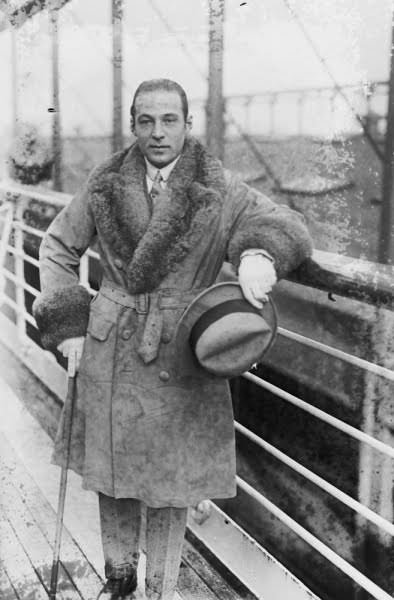
Early in his career, Valentino decided that he would rather go hungry than be poorly dressed. He was often ridiculed for his dress, wearing colorful shirts and ties that were considered “dandified” and effeminate. At the time, style traveled rather slowly, and the flamboyant dress of southern Italy was far from main stream in America. Valentino’s tastes never adjusted to American sensibilities, and his dedication to his own style is both commendable and eventually it became integral to his fame.
His persona and seductive style were adored by women, but his masculinity was frequently questioned by other American film stars. Valentino had a clear affinity to European clothing, and he had most of suits, shoes, and overcoats tailored by fine bespoke establishments in London. Personally, I find it interesting to see that he obviously liked wearing double breasted coats with two parallel rows 3 buttons each. He would only button the lower two. This silhouette is hardly seen anymore though interestingly, Baron von Eelking also liked wearing it.
As an avid rider of horses and fan of dogs, he also owned many fashionable English riding habits and sporting clothes. To assist him with his wardrobe, like any English gentleman, Valentino employed a valet. His estate catalog listed 30 suits, 60 pairs of gloves, almost 150 pairs of socks, 10 overcoats, more than 100 ties, nearly 60 pairs of shoes, and 109 shirt collars, among others. His “effeminate” style could also be contributed to his love of jewelry;
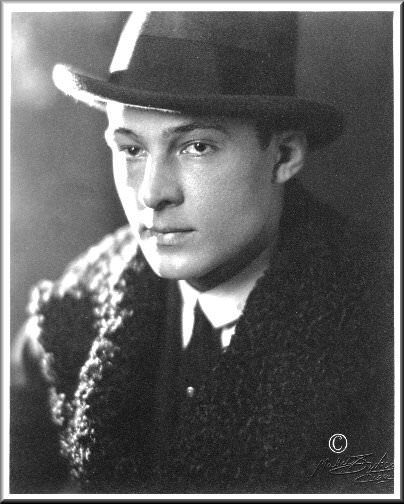
he once received a “slave” bracelet (inspired by one of his films) from his wife Natacha, which he wore proudly despite the controversy it caused. Valentino has also amassed a substantial collection of gold, silver, and diamond cufflinks, watches, rings, scarf pins, and card holders. It seems like he was also a supporter of a Homburg style hat without a silk brim. Usually, Homburg hats always have this brimmed edge but for some reason Valentino preferred the less formal version of this great hat.
As Valentino’s popularity grew, his style choices began to directly influence the public. Men wanted to emulate his slicked-back hairstyle and bought hair products in droves. Colorful clothing became increasingly popular. In one dramatic situation, Valentino briefly grew a beard for a film and the degree of public outcry was overwhelming. Fans wrote asking him to shave, and the Master Barber’s Association threatened to boycott his films for the damage he was doing to their business. Valentino quickly relented. (Luckily, we found a picture of the bearded Valentino, which can be found in the gallery below).
A Life Cut Tragically Short
By 1926, Valentino had reached the pinnacle of his career – he was undoubtedly one of the world’s most famous men. At the young age of 31, he collapsed suddenly while in New York and was rushed into surgery for a gastric ulcer and appendicitis.
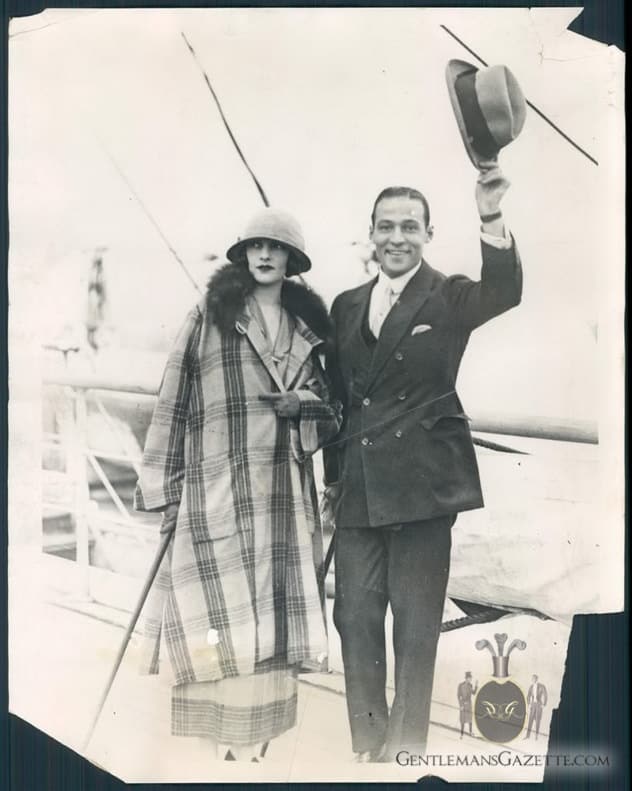
Even though Valentino seemed to be recovering well, he later lapsed into a coma and died 8 days later from an infection, though it was rumored to be from arsenic poisoning. His funeral was a public spectacle attended by fans and Hollywood Stars alike. Even after the initial rush publicity surrounding his death subsided, he would be in the news for many years to come. Despite earning nearly $2 million over his short career, he spent money freely and lavishly, to the extent that an observer claimed he didn’t know the real value of money. His family and his manager battled over his estate for nearly 6 years before a settlement was reached.
Rudolph Valentino was truly a multifaceted character; he experienced poverty and plenty, obscurity and fame, and love and loss. His dedication to his own personal style was remarkable, though it could fairly be considered excessive and all-consuming. One wonders if his early death could be considered merciful, in light of his dangerous financial habits, lifelong debts, diva behavior and the eventual demise of the silent film industry. He may very well have fallen into the same trap as George Valentin from The Artist. Regardless of what might have been, Rudolph’s status as an American style and film icon has rightfully been preserved to the modern day.
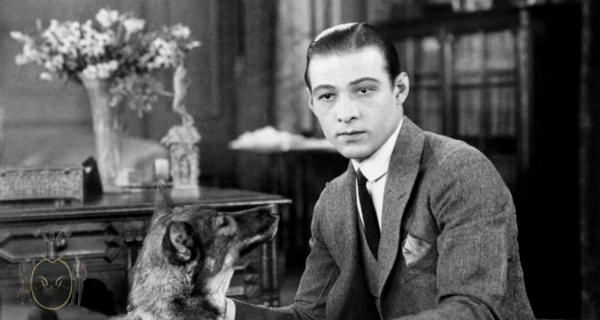
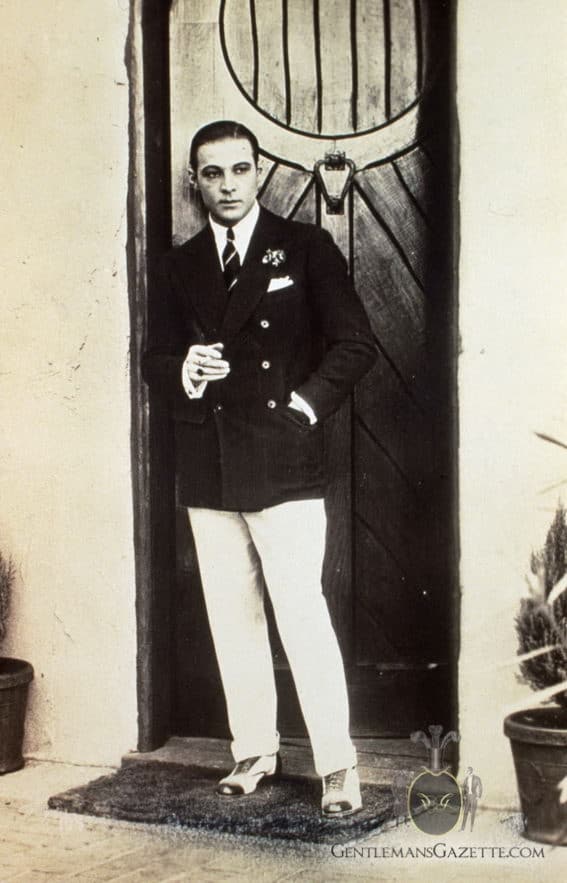
Reader Comments
Comments are closed.